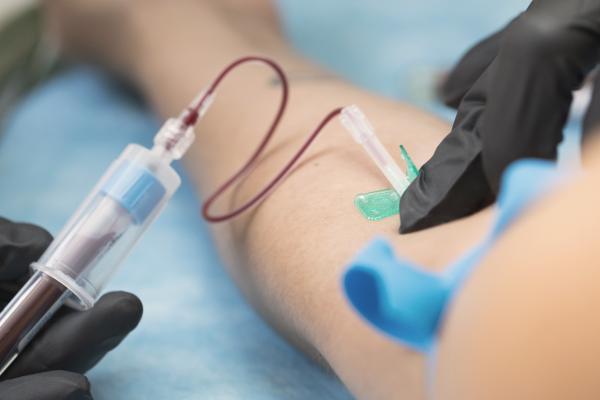
First national comparison of acute care surgery shows valuable opportunities for improvement.
It’s difficult for hospitals to plan for acute care patients in the Emergency setting. Patients can need care at all hours, with illness ranging from gallstones to appendicitis. For the first time, acute care surgeons across Canada have shared their experiences of a typical day at work. The surgeons recently took part in a 24-hour inventory initiated by researchers with the Vancouver Coastal Health Research Institute (VCHRI). Dr. Kristin DeGirolamo and her Vancouver colleagues wanted to get a nationwide snapshot of acute care.
“We recruited 16 hospitals across the country. Then, in a 24-hour window in January, from 7am to 7am, acute care surgeons filled out information for each patient. We tracked how many consultations they had, how many patients were admitted, how many complications there were, and so on.”

There is no existing database of acute care surgery statistics, and it took a long time to get ethics and study approval for each hospital. Dr. DeGirolamo says acute care surgery is a relatively new specialty in Canada so the effort required to gather more information was worthwhile.
“If we can better understand what each hospital is facing each day, which conditions are more prevalent and where there may be complications, we can be better prepared and make improvements for patient care nationwide.”
Acute care surgeons typically do not deal with cases like car accidents and injuries, which go to the trauma service. They deal with illnesses that flare up unexpectedly, that would otherwise be scheduled for elective surgery, with adequate pre-op preparation time.
Dr. Morad Hameed, VCHRI research scientist and president of the Canadian Association of General Surgeons, says acute care surgery patients are a big challenge: “These patients make up about 7 per cent of hospital admissions but their outcomes and complication rates are much worse than for those who have elective surgery. They arrive in distress—often with other illness— and it is difficult to optimize the best pre-surgery preparation.”
The inventory study found that the most common presentations were, in order, gall bladder disease (like gallstones), intestinal obstructions (blockages that prevent food or liquid moving through the digestive system) and diverticular disease (bulging pockets in the colon which can become infected and require surgery).
Surprising results
The study showed that 70 per cent of all emergency patients referred for a surgical consult were admitted to hospital. The other patients were able to go home or were referred to another department for outpatient care. But Dr. DeGirolamo says the most intriguing result was that the majority of the patients who were admitted did not end up having surgery.
“The surprising thing for me was the extent of non-operative work we are doing. I thought it would be about 50-50 but we are only operating on 40 per cent of the patients admitted. We are seeing a lot of patients that ultimately don’t need an operative intervention but they still end up in a surgical bed and have a surgical follow-up visit.”
Dr. DeGirolamo says the study can’t explain why these numbers are low, but they might be indicative of new trends in acute condition management. For example, in the case of appendicitis there is now evidence pointing to antibiotics as an alternate treatment to surgery. New interventions might mean that less surgeries overall are required than in the past.
Dr. DeGirolamo and Dr. Hameed hope they can build on the study results and work towards a stronger database—and research network—of emergency surgery practices across Canada. This could result in better care with less surgical complications and more efficient resource allocation. They’d like to include smaller hospitals, which don’t have dedicated acute care services. The study will be shared at the American College of Surgeons conference later this year and will then be published in medical journals.


